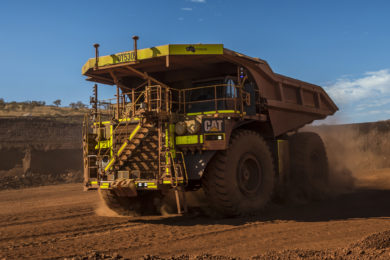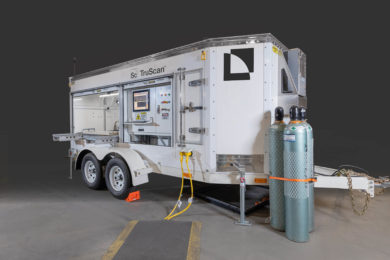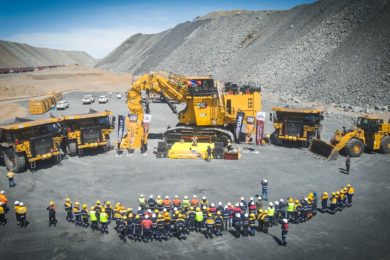In a close-run contest with Alun Phillips, RPM’s Product Manager – Scheduling Solutions, the team behind Caterpillar’s truly revolutionary MineStar technology has been chosen by the panel of judges around the world. Craig Koehrsen, Michael Murphy, Chuck Sahm, Carl Hendricks, Claude Aboujaoude, Jason Gough, Josh Bynon and Chuck Boen have developed a system for mines large and small, above and below ground. Cat® MineStar™ helps mines deal with everyday challenges – controlling costs, extending equipment life and enhancing safety.
Together, this group of exceptional individuals has over 45 patents and 150 combined years of technology innovation at Caterpillar. They continue to work on state-of-the art Cat technology systems today.
From the early days of GPS and data collection systems, these people revolutionised the machine control and guidance sector with the advent of the VIMS and Terrain systems (formerly known as Computer Aided Earthmoving System (CAES) and AQUILA Drill – the latter work by 2015 Surface Mining inductee Jonathan Peck). These early technologies provided a foundation for Cat technology systems today, including comprehensive surface and underground automation technologies at work in mine sites around the globe. These systems have now joined forces to make up the Cat MineStar System, probably the mining industry’s broadest and most comprehensive suite of technology products on the market today.
Nearly 30 years ago, a small group of three people were tasked with revolutionising the way data was captured and transferred on Cat machines. This product, soon to be known as VIMS™, was the first product to use Windows in an off-board application as opposed to the very popular DOS systems of the day. VIMS had more computing power than the moon missions at that time, and this cutting edge technology, generations later, is still a foundational data system on Cat mining machines today.
The use of GPS was the next major milestone. As one of the first companies to utilize GPS in machine control systems, Caterpillar was again leading the industry with technology. Decades later, information systems and bandwidth have evolved tremendously and Caterpillar has been ready to adapt that evolution every step of the way. In 1996 Caterpillar debuted the first autonomous truck at MINExpo. At the time the mining industry was not ready for such a radical change, so the team kept working to perfect the system until the market was ready to adopt. Currently Caterpillar has two fleets of autonomous trucks running at mines and a test fleet at the Arizona Proving Grounds. Caterpillar is actively pursuing the vision for a fully autonomous mine site.
Today, MineStar is behind the largest single autonomous truck fleet in the world, that employed by Fortescue Metals’ Solomon iron ore mine in Western Australia. That fleet comprises 45 ‘Command for hauling’ Cat 793F CMD trucks.
At RPM, runner-up Phillips has made an overwhelming contribution to software development. In his early days he was instrumental in the design and creation of a rules based scheduling engine for XPAC, RPM’s flagship product that for many years has been the industry standard for mine scheduling.










